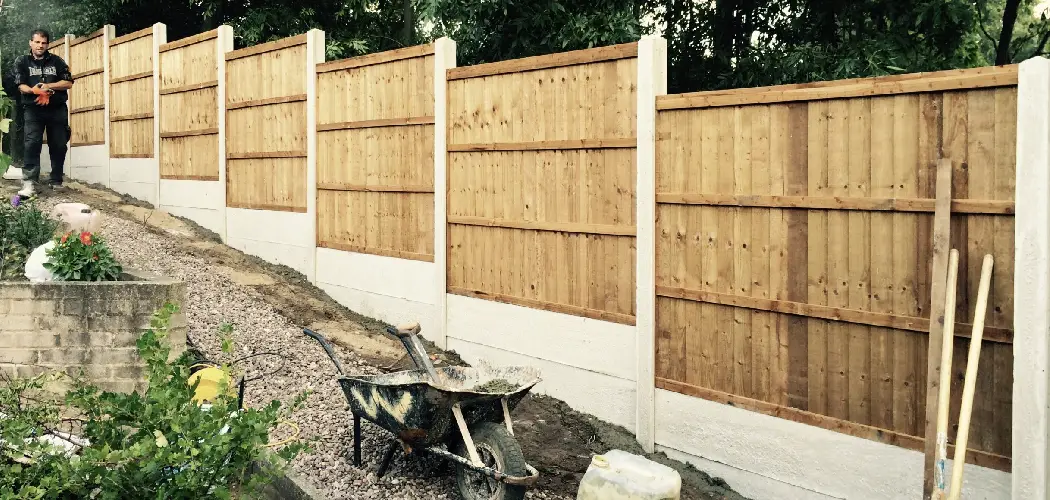Are you looking for a way to increase your home’s security, privacy, and curb appeal? Building a fence on a slope may be the solution you are looking for. But don’t worry, it doesn’t have to be intimidating or overwhelming!
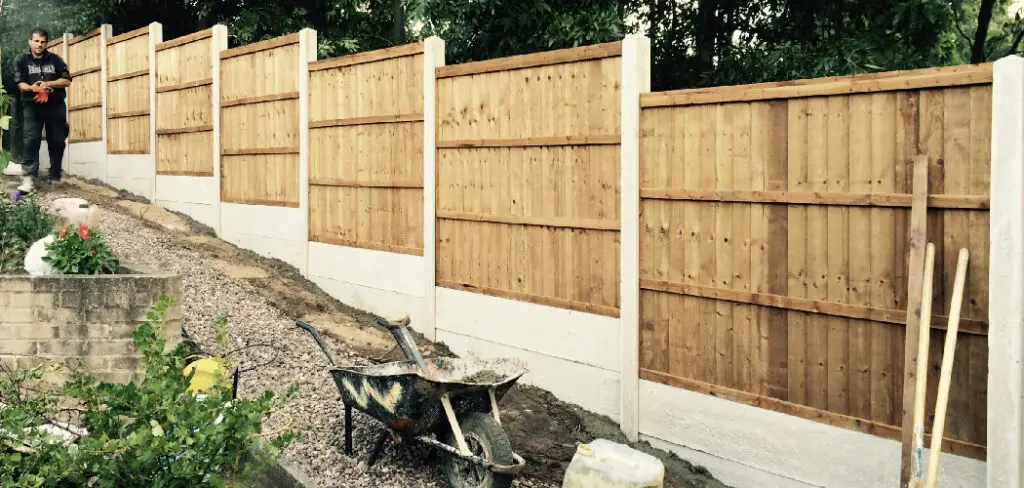
With this tutorial from DIY Home Solutions, you can learn the secrets of successful fencing installation on even the steepest slopes. Plus, we’ll show you helpful tips and tricks to make constructing your fence an enjoyable experience. So follow along as we teach everything there is to know about how to build a fence on a slope – fast and easy!
Tools and Materials You Will Need to Build a Fence on a Slope
Before you start, here is a list of materials and tools that will help make the process easier:
- Post hole digger
- Fence posts
- Nails or screws
- Hinges and gate hardware
- Level
- Tape measure
Step-by-Step Guidelines on How to Build a Fence on a Slope
Step 1: Figure Out Where Your Posts Should Go
The first step towards building a fence on a slope is to figure out where your posts should go. Use stakes and string or surveyor’s tape to mark the locations of your posts. Make sure that each post is placed securely enough not to move, as this will affect the effectiveness of the entire fence.
Step 2: Dig Post Holes
The next step is to dig post holes. You will need a post-hole digger or auger to accomplish this task. Each hole should be at least two feet deep and 8 inches in diameter. Note: If you are building your fence on a particularly steep slope, you may want to make the holes for your posts deeper to ensure stability.
Step 3: Place Posts in the Holes
Now it’s time to place your posts in the holes. Make sure each post is firmly placed and level. If you are having difficulty keeping the post level, try using a small block of wood underneath to help keep it upright. Once all of your posts are in place, fill the remaining space in each hole with soil and tamp it down.
Step 4: Secure the Posts
To secure your posts, use nails or screws to attach them to a horizontal rail of 2x4s. You will need to measure the distance between posts so that you can determine how long your rails should be. Once all of your rails are secured, use additional screws or nails to attach the pickets.
Step 5: Finish Up with a Gate and Hinges
The last step is to finish up your fence by adding a gate and hinges. Make sure that your gate is level before you attach it. Once it’s in place, use hinges to secure the entire structure. Finally, make sure that all of your screws and nails are securely attached, and you’re done. Make sure to paint or stain your fence if desired for a finished look.
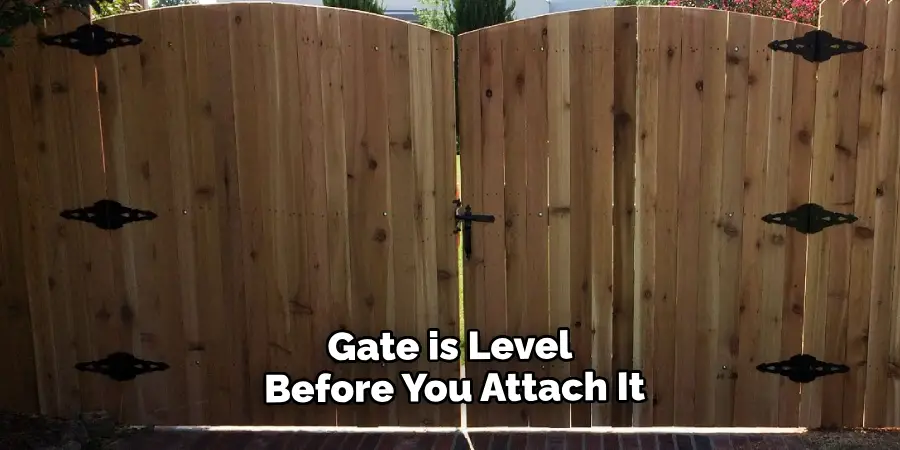
Now you know everything there is to know about how to build a fence on a slope! With these step-by-step instructions, building a sturdy and attractive slope-side fence has never been easier. So don’t wait – start planning your next fencing project today!
Additional Tips and Tricks to Build a Fence on a Slope
1. When building on a slope, consider the use of stepped fencing. This type of fence follows the contours of the ground and creates a more aesthetically pleasing look than straight lines.
2. If you’re using wooden posts when working on uneven terrain, be sure to use pressure-treated posts that are designed to withstand changing weather conditions and will last longer.
3. Always use galvanized nails when attaching fence boards since they won’t corrode, rust, or stain over time like regular nails.
4. When building on a slope, it is important to ensure that the posts are set firmly in the ground so that the fence remains secure and stable for years to come. Consider using the concrete mix as a base for your posts to provide extra stability.
5. To ensure an even and secure fence, it is important that the pickets are attached with screws instead of nails. This will help keep everything in place and prevent any gaps from forming over time.
6. For slopes where the grade is greater than 15 degrees, you may want to use a tension band system instead of traditional posts and panels. This type of fence utilizes a heavy-duty cable that is tensioned between the posts to provide extra stability on steep grades.
7. If the terrain you’re working with isn’t suitable for post holes, or if you’d like an easier installation process, consider using pre-assembled panels instead of building your own fence from scratch. This option is much quicker and less labor-intensive than building a fence with posts, pickets, and other materials.
8. For extra security, consider using a steel or aluminum post for the top rail of your fence instead of wood. This will make it more difficult for anyone to attempt to breach your fence’s boundary.
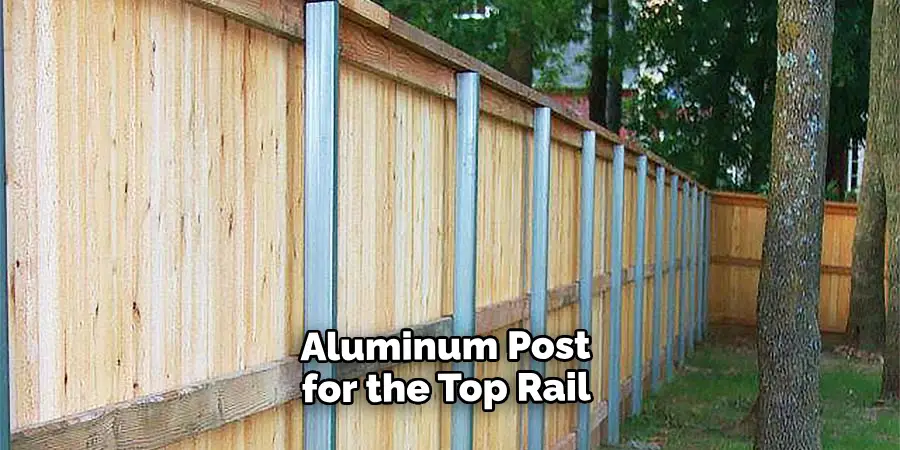
9. If you need help installing a fence on a slope, it is best to hire a professional fence contractor who specializes in this type of installation. They will be able to provide advice and guidance throughout the process as well as ensure that your fence is built safely and securely.
10. Finally, always make sure to check with local building codes before constructing any fence on a slope. This will help ensure that you don’t accidentally break any regulations and can avoid costly fines or other penalties.
By following these tips and tricks, building a fence on a slope doesn’t have to be a daunting task! With the right materials, know-how, and patience, anyone can build their beautiful fence quickly. Just make sure to always double-check measurements and regulations to ensure a safe and secure end result. Good luck!
Considerations for Maintenance on a Fence on a Slope
1. A fence that is built on an incline may not require as much maintenance as one that is placed on level ground, however, it is still important to check the fence’s structure periodically.
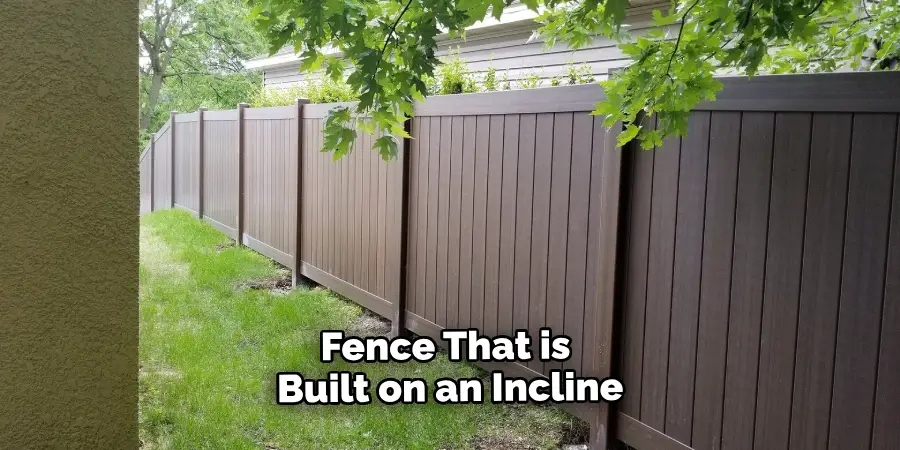
2. Inspect the posts and rails of your fence to make sure they are still firmly in place, it is especially important to check the bottom of the post as this will be where the most pressure is applied when people walk on or lean against your fence.
3. Make sure there are no gaps between the boards or pickets that could potentially allow small animals or children to slip through.
4. If you find that the posts have shifted, you may need to reset them by loosening the dirt around them and then firmly pounding the post back into place with a sledgehammer.
5. Be sure to inspect your fence annually for any damage done by wind or rain and repair it as soon as possible.
6. You may also want to consider adding a weatherproof sealant or paint to the fence to protect it from further damage.
7. For an added layer of protection, you can install snow guards at the top of your fence in areas where there is heavy snowfall. This will help prevent any large chunks of ice or snow from sliding off and potentially damaging your fence.
8. Finally, don’t forget to trim any vegetation growing near or around your fence as this can cause damage over time if left untended.
Following these tips will ensure that your fence stays in good condition for many years to come. With a little bit of maintenance, you can enjoy the beauty of your slope-built fence without worrying about damage or deterioration.
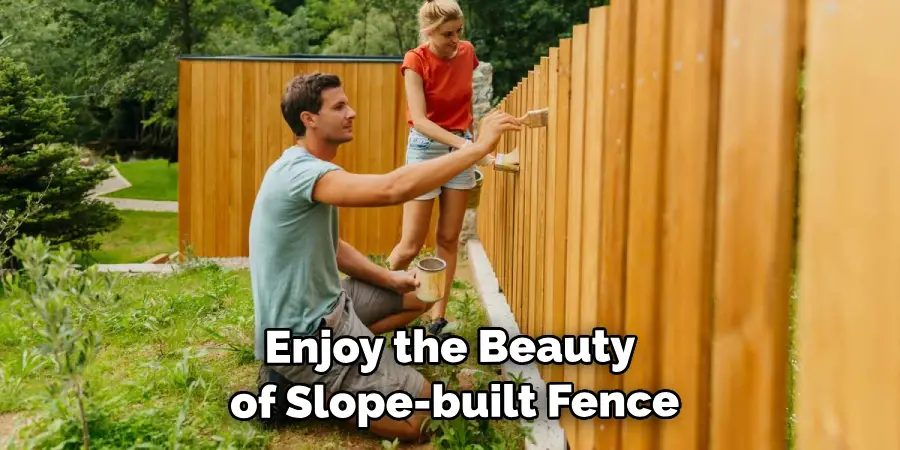
Frequently Asked Questions
Can I Build a Fence With My Own Tools?
Yes, if you have the right tools and materials, you can build a fence with your own tools. You will need to measure and mark out the fence line, and make sure you have enough material to build a secure fence. Depending on the slope of your land, you may need additional tools such as spirit levels and posts with adjustable feet.
It is also important to remember that when constructing a fence on a slope, you should always start at the bottom of the slope and work your way up.
What Type of Fence Is Best For a Slope?
The type of fence that is best for slopes depends on its purpose. If you are looking to keep animals in or out, then chain-link and mesh fences work well, as their height can be adjusted with feet to accommodate uneven ground.
If you’re after a decorative fencing solution, then picket fences and rail fences are a good choice, as they can be adapted to fit the contour of any slope. If you’re after security, then a privacy fence is your best bet – but it must be installed carefully to ensure it does not collapse under the force of gravity.
Is Building a Fence on a Slope Difficult?
Building a fence on a slope can be difficult, but it is not impossible. It will require more time and effort than on flat ground, as you need to take extra measures to make sure the fence is secure. Measurements must be precise and carefully calculated, and you will need additional tools such as spirit levels and posts with adjustable feet.

As long as you take the time to get it right, your fence will be strong and secure.
What Is The Difference Between a Stepped Fence and a Racked Fence?
A stepped fence is when the panel heights are adjusted at intervals to accommodate for changes in ground level, whereas a racked fence is when the panels remain at a consistent height and are installed parallel to the ground. Stepped fences are best for more dramatic changes in elevation, while racked fences are best for gentle undulations or slopes.
Conclusion
Building a fence on a slope is not an easy job. It requires careful measuring, planning, and materials. Yet it can be done with good judgment, hard work, and the right tools. Whatever kind of slope you’re dealing with, there is a design solution that will work for your fencing needs. Consider taking a look at an instructional video or consulting a professional to ensure the best results for your project.
The effort you put into building your fence on a slope will pay off in spades when it’s complete; think of all the extra security and beauty you’re adding to your property! Regardless of how daunting the task may seem at first, take on the challenge of installing a fence this weekend and start reaping the rewards immediately. Now that you know how to build a fence on a slope, there’s no time like the present to get started!
About
Outdoor Fixes is a distinguished figure in the world of Diy design, with a decade of expertise creating innovative and sustainable Diy solutions.
His professional focus lies in merging traditional craftsmanship with modern manufacturing techniques,
fostering designs that are both practical and environmentally conscious. As the author of diy,
outdoorfixes delves into the art and science of outdoorfixes-making, inspiring artisans and industry professionals alike.
Education RMIT University
(Melbourne, Australia) Associate Degree in Design (Outdoor Fixes) Focus on sustainable design, industry-driven projects,
and practical craftsmanship. Gained hands-on experience with traditional and digital manufacturing tools, such as CAD and CNC software.
Nottingham Trent University
(United Kingdom) Bachelor’s in outdoorfixes.com and Product Design (Honors) Specialized in product design with a focus on blending creativity with production
techniques. Participated in industry projects, working with companies like John Lewis and Vitsoe to gain real-world insights.
Publications and Impact
In diy, Outdoor Fixes his insights on indoor design processes, materials, and strategies for efficient production.
His writing bridges the gap between artisan knowledge and modern industry needs, making it a must-read for both budding designers and seasoned professionals.

